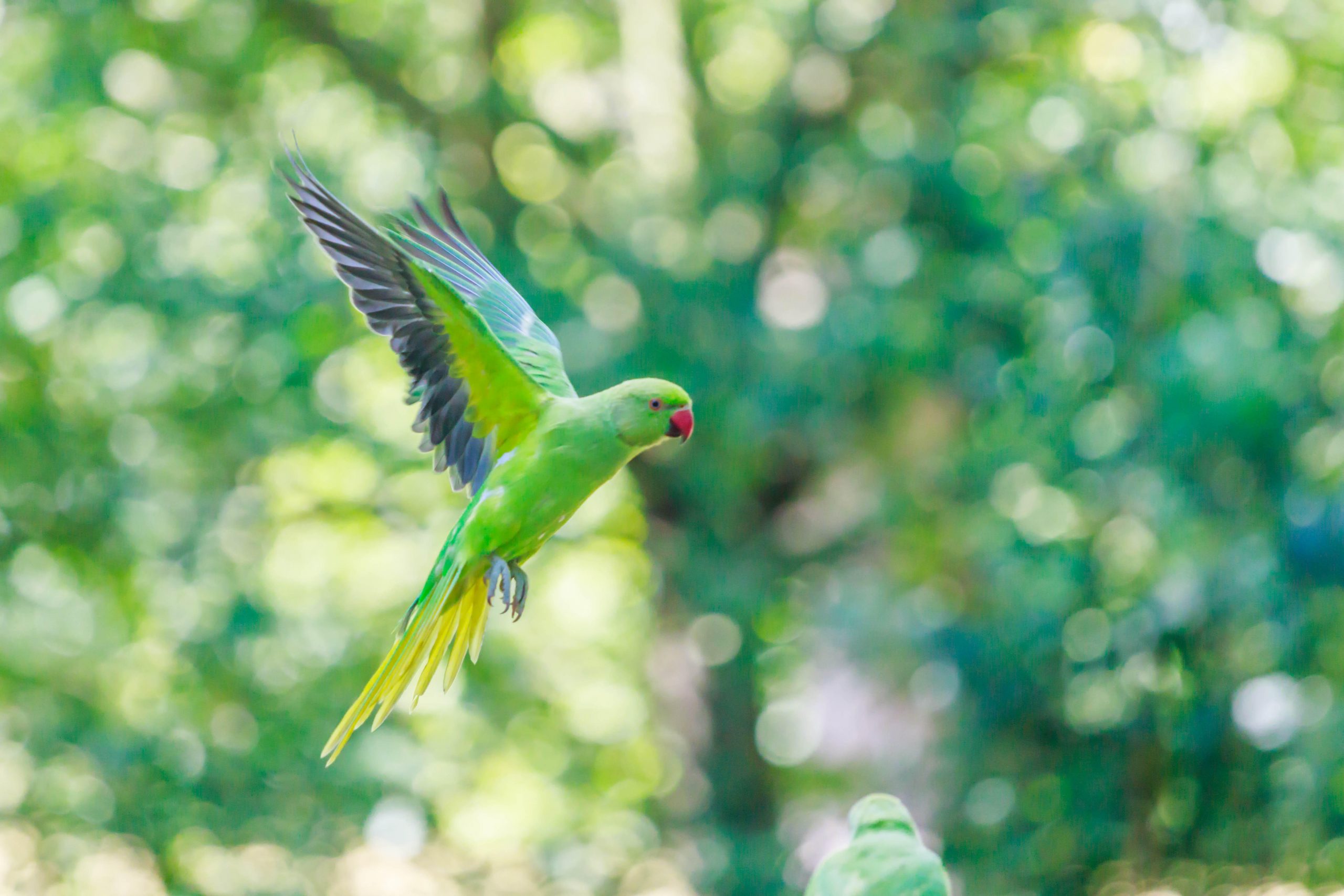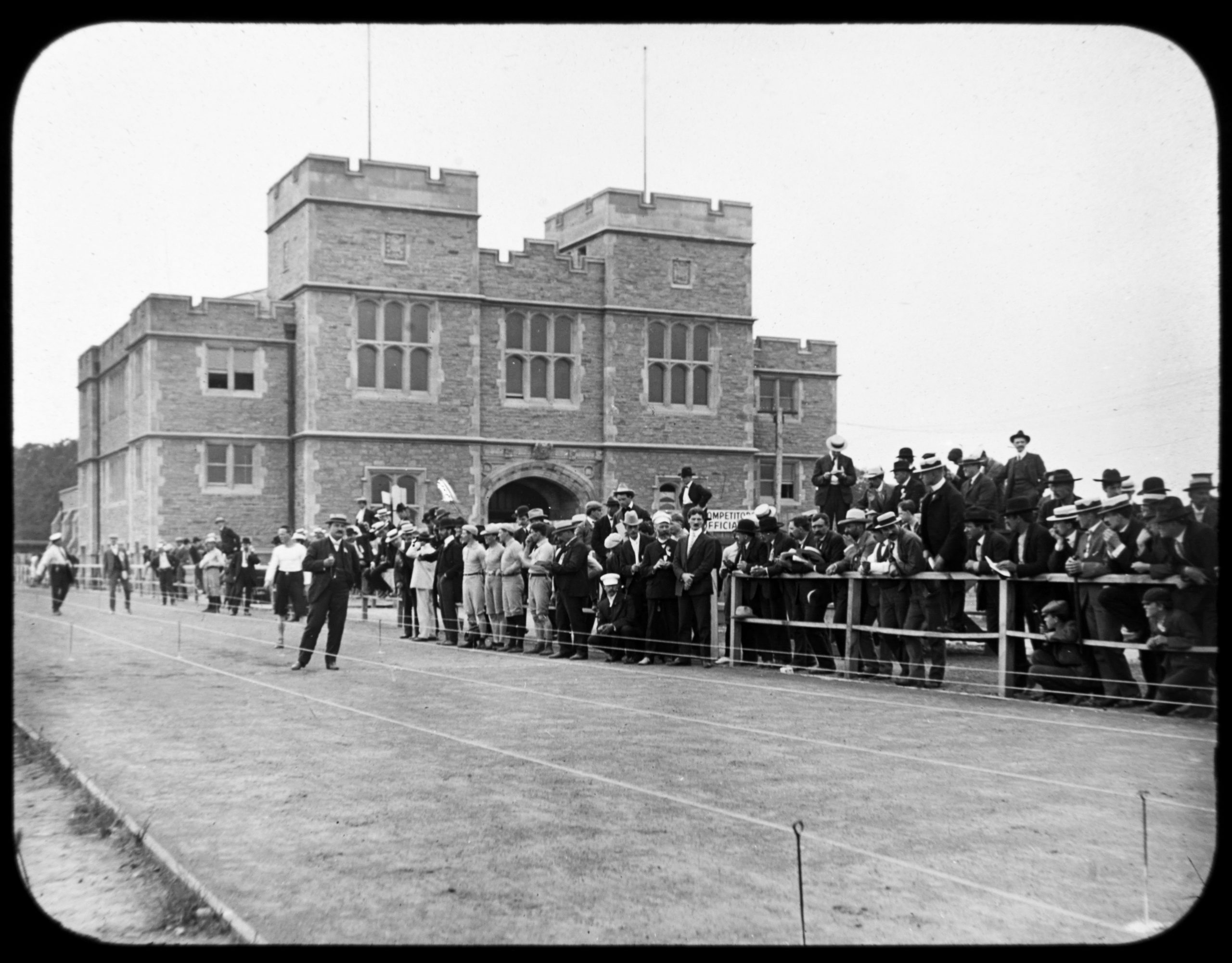Curious Questions: Are parakeets a treasure or a curse?
Ring-necked parakeets have made themselves at home across London and beyond, but how did these birds come to swap tropical climes for our grey shores, asks Claire Jackson.


The final notes of the overture to Mozart’s The Marriage of Figaro end triumphantly, but, as applause ripples through the Opera Holland Park audience, there is a loud, prolonged squawk. Figaro and Susanna’s appraisal of their soon-to-be marital quarters is interrupted by hecklers from a nearby horse-chestnut tree. It appears the parakeets are not fans of opera comic.
For some, the birds’ calls — the occasional peacock also makes its presence known — enhance the charming setting at the former London home of the Earl of Ilchester, but others rattle at the penetrating squalls. They’re not only in Holland Park: ring-necked parakeets have made themselves well and truly at home across London, with colonies now spreading throughout England and beyond; there have even been recent sightings in Scotland. But how did these gregarious green avians come to swap tropical climes for our grey shores?
Wild parakeets were first documented in the UK in 1970, when they were observed living in London parks. It was speculated that the flocks originated from birds released from the set of The African Queen at Shepperton Studios in 1951. Similarly, Jimi Hendrix is said to have freed his parakeets along Carnaby Street. As tantalising as these tales are, it’s unlikely that today’s birds can be traced directly to these escapees.
However, the first breeding pairs were undoubtedly former pets; the ring-necked parakeet was a popular addition to Victorian households attracted to its bright plumage.
Less attractive were the parrot’s frequent and resonant vocalisations, which may have contributed to multiple releases. Some birds escape of their own accord: the artist Mouse Macpherson (‘The mouse that roared’, August 4, 2021),wrote of the ‘black day’ when her love birds flew out of an open window.
Frequent releases and favourable circumstances — in the parakeets’ case, well-stocked urban parks and rising temperatures — enabled the birds to become established.
The acidic-green parrots bring a touch of glamour to bird tables, like well-groomed strangers at a cocktail party, and their iridescence evokes exotic landscapes (their native range is a broad belt of arid, tropical countryside stretching from west Africa across lowland India, south of the Himalayas).
Exquisite houses, the beauty of Nature, and how to get the most from your life, straight to your inbox.
With an estimated population of as many as 25,000 pairs, the parakeets are now a firm fixture. But there are concerns about the impact the birds may have on native species, particularly other nest-hole birds, such as woodpeckers, nuthatches and starlings.
‘Human activity is driving down biodiversity at a local, national and global scale,’ says Paul Walton, head of habitats and species at RSPB Scotland. ‘There are five key elements: habitat degradation, climate change, exploitation of natural resources, pollution and invasive non-native species.’

The parakeets fall into the last category and, like the introduction of rhododendrons to Scotland’s temperate rainforests, they have the potential to cause serious issues. ‘People have moved animals and plants around the world deliberately, but, more often, accidentally and allowed them to establish in areas to which they are not native,’ explains Dr Walton. ‘The principal drivers of biodiversity loss work in synergy, so the parakeets are able to develop strongholds in the UK due to milder winters.’
The parakeet’s recent spread beyond the capital has led to mutterings about Government intervention, but it has been announced that culling will not go ahead — partly because the population is too well established and also there isn’t yet enough evidence of the impact on native species to justify controversial and complex measures. Controlling a bird that thrives in populated areas, especially gardens and public spaces, is rife with complications.
Dr Walton asserts that the RSPB is a ‘Nature conservation organisation, not an animal-welfare organisation’ and, although the official stance is that the body is ‘not in favour of a cull of parakeets at this time’, he emphasises that ‘we need to keep a close eye on the situation’.
The Peter Pan statue in Kensington Gardens is a not-so-secret spot for close encounters with parakeets. No self-respecting Londoner would be seen dead here, but, as an out-of-towner (and owner of the Emma Bridgewater parakeet mug), I have no shame in joining the tourists covered with green-feathered friends.
I intend to stick to strictly journalistic observation, but, when a small child offers me her apple to attract a nearby bird, it’s impossible to resist. Within moments, a parakeet lands on the fruit in my waiting hand, allowing me to stroke its head. I send a photograph to a friend who grew up in north London. ‘Hate them so much,’ she replies.
Feeding parakeets is not encouraged in any of the Royal Parks. The charity launched a campaign called ‘Keep Wildlife Wild’, which asks visitors to refrain from bringing food for animals. Hyde Park attracts 13 million visitors each year, which equates to a lot of apples for parakeets. The subsequent overcrowding can bring disease and further upset the ecosystem. Once again, humans are at the heart of the UK’s parakeet problem.
Parrot fever
• The earliest sighting of a wild ring-necked parakeet in the UK was in 1855, when one was spotted in Norfolk
• Ring-necked parakeets, as are all birds, are protected in the wild under the Wildlife and Countryside Act. The species can be controlled under licence where there is evidence of a threat to native species, damage to crops or for air-safety purposes
• Media coverage of ‘parrot fever’, a rare, but potentially fatal disease, may have caused an increase of releases in the 1950s
• The case of the parakeet is not an isolated one. ‘There are issues in freshwater areas where terrapins have been released and established,’ says RSPB Scotland’s Paul Walton. The import of red-eared sliders was banned in 1997, due to concerns about the numbers of feral animals, but pet owners switched to yellow-bellied terrapins, which have been sighted in British waterways
<hr>

Credit: Alamy
Curious Questions: Are bees really busy?
We've all used the phrase 'busy as a bee' – but is it justified? Or are bees just as liable

Credit: Alamy
Curious Questions: How wise are owls?
The age-old image of the intelligent owl has persisted for centuries — but are they really the intellectuals of the
Country Life is unlike any other magazine: the only glossy weekly on the newsstand and the only magazine that has been guest-edited by His Majesty The King not once, but twice. It is a celebration of modern rural life and all its diverse joys and pleasures — that was first published in Queen Victoria's Diamond Jubilee year. Our eclectic mixture of witty and informative content — from the most up-to-date property news and commentary and a coveted glimpse inside some of the UK's best houses and gardens, to gardening, the arts and interior design, written by experts in their field — still cannot be found in print or online, anywhere else.
-
 What on earth is the person who comes up with Annabel's otherworldly facade displays on? London's most magical Christmas shop displays
What on earth is the person who comes up with Annabel's otherworldly facade displays on? London's most magical Christmas shop displaysPhotographs by Greg Funnell.
-
 What trees taught me about perfect planting — Alan Titchmarsh
What trees taught me about perfect planting — Alan TitchmarshSense and patience is key to growing healthy trees, as a certain Mr Mackenzie showed a young Alan Titchmarsh
-
 Curious Questions: Did the Victorians pave the way for the first ULEZ cameras in the world?
Curious Questions: Did the Victorians pave the way for the first ULEZ cameras in the world?Martin Fone takes a look at the history of London's coalgates, and finds that the idea of taxing things as they enter the City of London is centuries old.
-
 Curious Questions: What are the finest last words ever uttered?
Curious Questions: What are the finest last words ever uttered?Final words can be poignant, tragic, ironic, loving and, sometimes, hilarious. Annunciata Elwes examines this most bizarre form of public speaking.
-
 Curious Questions: Why do we still love pirate stories, 300 years on from Blackbeard?
Curious Questions: Why do we still love pirate stories, 300 years on from Blackbeard?Tales of swashbuckling pirates have entertained audiences for years, inspired by real-life British men and women, says Jack Watkins.
-
 Curious Questions: Why is race walking an Olympic sport?
Curious Questions: Why is race walking an Olympic sport?The history of the Olympics is full of curious events which only come to prominence once every four years. Martin Fone takes a look at one of the oddest: race walking, or pedestrianism.
-
 Curious Questions: Where does the phrase 'daylight robbery' come from? It's literally about the theft of daylight
Curious Questions: Where does the phrase 'daylight robbery' come from? It's literally about the theft of daylightMartin Fone tells a tale of sunshine and tax — and where there is tax, there is tax avoidance... which in this case changed the face of Britain's growing cities.
-
 Curious Questions: Is there a way to win at rock, paper, scissors?
Curious Questions: Is there a way to win at rock, paper, scissors?A completely fair game of chance, or an opportunity for those with an edge in human psychology to gain an advantage? Martin Fone looks at the enduringly simple game of rock, paper, scissors.
-
 Curious Questions: Is being left-handed an advantage?
Curious Questions: Is being left-handed an advantage?In days gone by, left-handed children were made to write with the ‘correct’ hand — but these days we understand that being left-handed is no barrier to greatness. In fact, there are endless examples of history's greatest musicians, artists and statesmen being left-handed. So much so that you'll start to wonder if it's actually an advantage.
-
 Curious Questions: Why does our tax year start on April 6th?
Curious Questions: Why does our tax year start on April 6th?The tax-year calendar is not as arbitrary as it seems, with a history that dates back to the ancient Roman and is connected to major calendar reforms across Europe.
